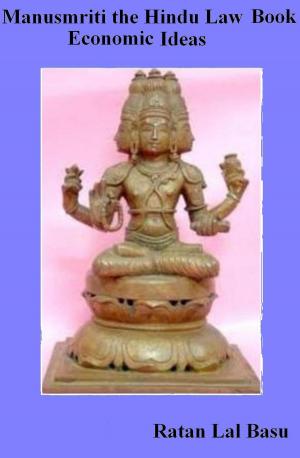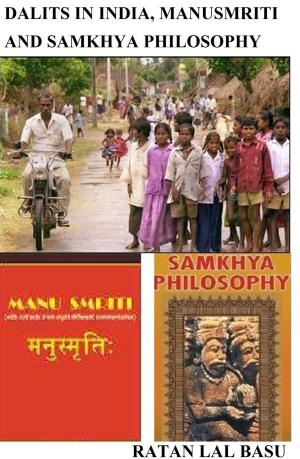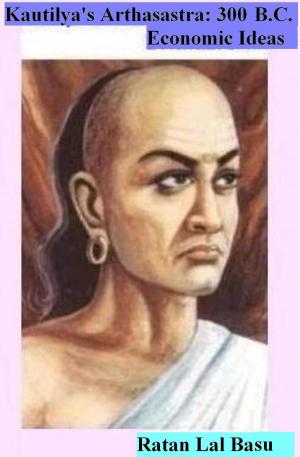Mao Zedong & Future of Mankind
Nonfiction, Social & Cultural Studies, Political Science, Politics, History & Theory| Author: | Ratan Lal Basu | ISBN: | 9780463008546 |
| Publisher: | Ratan Lal Basu | Publication: | May 13, 2018 |
| Imprint: | Smashwords Edition | Language: | English |
| Author: | Ratan Lal Basu |
| ISBN: | 9780463008546 |
| Publisher: | Ratan Lal Basu |
| Publication: | May 13, 2018 |
| Imprint: | Smashwords Edition |
| Language: | English |
The Cultural Revolution in the Peoples Republic of China (1966-1977), with its devastating consequences, is now a matter of history and only remembered as a misadventure and fantasy of Mao-Tse-tung.
In this article, however, we look upon the concept of the Cultural Revolution from an unconventional perspective and emphasize that so far as the basic concept is concerned, Cultural Revolution has special relevance for the modern society and it may be conceived as a collective endeavour to ensure uplift of human mind and psychic modes as a whole. Here we endeavour to highlight the correspondence of the concept of the Cultural Revolution to two almost similar ways to go into the depth of the causes of maladies afflicting human society from time immemorial.
The first comparison is made with the views of the moral philosopher and economist Adam Smith who divides human sentiments into two major categories, viz. nobler elements and baser elements and attributes all maladies of human society to the later group of sentiments. The second view corresponds to the ancient Indian Sankhya Philosophy, which classifies human modes of living into three categories, viz. tamasika, rajasika and satvika, and holds the latter two modes responsible for all maladies that afflict human living.
For removal, of, maladies from human society, Smith calls for replacement of the baser human sentiments by nobler sentiments, and to this end, according to Sankhya view indicates, the initiation of a process of transition from tamasika and rajasika modes to satvika mode. A deeper look would reveal the fact that both the Smithian and Snkhya views are, in essence, the same – baser sentiments of Smith comparable to tamasika and rajasika modes, and nobler sentiments to satvika mode. However, neither Smith nor Sankhya philosophy provide any guidelines for efficacious transition of human psychosis to the desired end. In this context, the concept of the Cultural Revolution becomes relevant. The concept, interpreted from a radically different standpoint from Maoist interpretation, and therefore conceived as an evolutionary process rather than a destructive revolution, may enable us to device a viable transitional process of human values and psychosis from both the Smithian and the Sankhya standpoints.
The Cultural Revolution in the Peoples Republic of China (1966-1977), with its devastating consequences, is now a matter of history and only remembered as a misadventure and fantasy of Mao-Tse-tung.
In this article, however, we look upon the concept of the Cultural Revolution from an unconventional perspective and emphasize that so far as the basic concept is concerned, Cultural Revolution has special relevance for the modern society and it may be conceived as a collective endeavour to ensure uplift of human mind and psychic modes as a whole. Here we endeavour to highlight the correspondence of the concept of the Cultural Revolution to two almost similar ways to go into the depth of the causes of maladies afflicting human society from time immemorial.
The first comparison is made with the views of the moral philosopher and economist Adam Smith who divides human sentiments into two major categories, viz. nobler elements and baser elements and attributes all maladies of human society to the later group of sentiments. The second view corresponds to the ancient Indian Sankhya Philosophy, which classifies human modes of living into three categories, viz. tamasika, rajasika and satvika, and holds the latter two modes responsible for all maladies that afflict human living.
For removal, of, maladies from human society, Smith calls for replacement of the baser human sentiments by nobler sentiments, and to this end, according to Sankhya view indicates, the initiation of a process of transition from tamasika and rajasika modes to satvika mode. A deeper look would reveal the fact that both the Smithian and Snkhya views are, in essence, the same – baser sentiments of Smith comparable to tamasika and rajasika modes, and nobler sentiments to satvika mode. However, neither Smith nor Sankhya philosophy provide any guidelines for efficacious transition of human psychosis to the desired end. In this context, the concept of the Cultural Revolution becomes relevant. The concept, interpreted from a radically different standpoint from Maoist interpretation, and therefore conceived as an evolutionary process rather than a destructive revolution, may enable us to device a viable transitional process of human values and psychosis from both the Smithian and the Sankhya standpoints.















